Best wine glasses UK 2021: the best glasses to accentuate the flavours and aromas of a great glass of wine
This article contains affiliate links. We may earn a small commission on items purchased through this article, but that does not affect our editorial judgement.


You could pick any glass to drink your wine from (or, if you’re an Instagramming foodie, any jam jar) and, if it’s a quality wine, it’ll still taste good.
But if you want to enjoy your favourite wine in a way that best shows off its aroma and flavours – not to mention its good looks – then you might want to consider a specific glass for the task.
There are those who take glass and wine matching to extremes, arguing that even the different grape varieties need their own specialist glassware.
We’re not the kind to get into an argument with those types (or have the budget and shelf space to buy that many glasses) so have opted for a more flexible approach to glass selection and in this feature have chosen glasses to cover more generic ranges of reds and whites, along with a ‘universal’ glass in which anything goes.
A quality wine glass is a beautiful thing in its own right and the leaders in the field, such as Zalto, Spiegelau, Riedel and Eisch, fine tune their glassware to perfection, taking in factors such as glass thickness, weight, balance and bowl shape to allow the senses to best appreciate its contents.
Many of these glasses don’t come cheap – particularly if you’re paying for ultra-thin, mouth-blown glassware – so you would want to be serious about wine in order to invest in a set. But there is also a huge range of affordable glasses that can still elevate your wine beyond the any-old-glass approach.
To help you identify what shape of glass best suits various wine styles, and to give you a broad spectrum of prices, we’ve sipped from across the range of glass suppliers and matched them up with a style.
If you like the sound of a particular brand, and it’s within your budget, then check out what other styles they produce – most manufactures have various shapes within their range that suit many different wines.
And the next time you pour yourself a wine, take in the beauty of the glass too. Admire its shapely qualities and understand how its design is enhancing the wine – your drinking experience will be all the better for it.
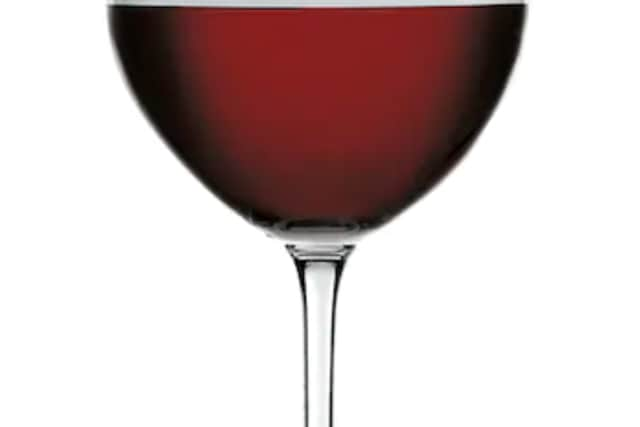

If you’re after generic red wine glasses from a top notch manufacturer, these from Spiegelau are hard to beat.
The German company has a history that stretches back for 500 years and is constantly evolving to be at the forefront of contemporary glassware design (having set the trend for craft beer glasses it recently moved on to cider).
The design of these glasses may be along classic lines, but there’s something about the look and feel of the Spiegelau that elevates it from most high street purchases.
It has super thin glass, which makes it lightweight and aids spill-free sipping, while also giving an extra clarity to the contents.
A tall stem makes it easy for us less sophisticated folk to grab, but you can also comfortably cup the bowl with your hand to gently warm those wines that need it. Class in a glass.
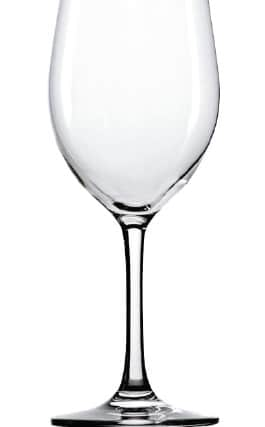

These crystal wine glasses from German manufacturer Stölzle have the traditional elegance associated with white wine glasses.
With a 370ml capacity they have a smaller bowl than most red wine glasses, which helps keep the wine chilled, while the narrow rim helps accentuate the wine’s bouquet for maximum olfactory satisfaction.
Despite their slender, elegant curves, these glasses are also built to be durable for busy modern lives – they’re stable and can be put in the dishwasher without fear of breakage.
You could get wider glasses for white wines such as Chardonnays that like a bit of aeration, or narrower ones for an extra chilled, fruity Riesling, but for all round white wine performance these are excellent and at a good value too.
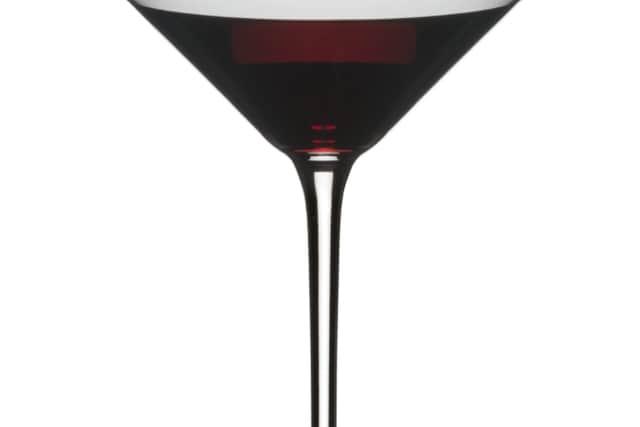

Riedel is regarded as being in the Premier League of wine glass manufacturing and is one of the companies that produces glasses for specific wines (or, as they put it, “grape varietal specific wine tools”).
This modern creation is designed primarily for bright, light reds such as Pinot Noirs or Burgundies, but we won’t tell on you if you fill it with an alternative red.
It has a huge 770ml capacity with a vast bowl perched on a narrow stem, which allows for plenty of aeration, while the tapered rim helps concentrate the delicate aromas, thus allowing your nose to wallow in the wine’s fruity character. Pour a standard measure (please don’t be tempted to fill it), give it a gentle swirl to set the aeration process in motion, and get stuck in.
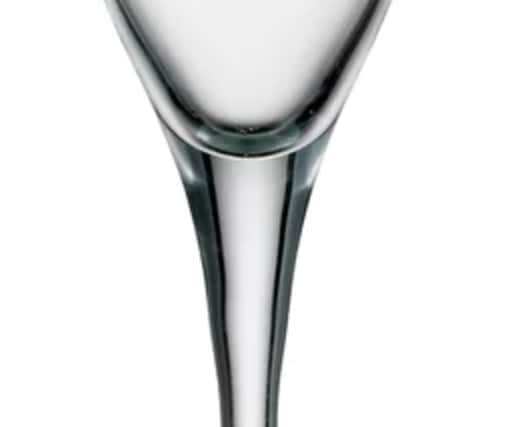

Some folk scoff when they see drinkers flaunting a flute, citing its lack of nostril access as a main fault, but for us it’s all about the visual appeal of the sparkling wine in the glass.
Nothing beats the thrill of froth rapidly rising to the rim on pouring, or the subsequent mesmerising sight of bubbles darting to the surface.
The DRH Collection has just the right degree of sophistication to its flutes, but at a price that will have you clinking with confidence.
It’s machine-made with a pulled stem and has a rigid, well balanced sturdiness, while subtle curves give the overall design a distinctive shape.
Nevermind the naysayers, top this flute with bubbles and toast in style.
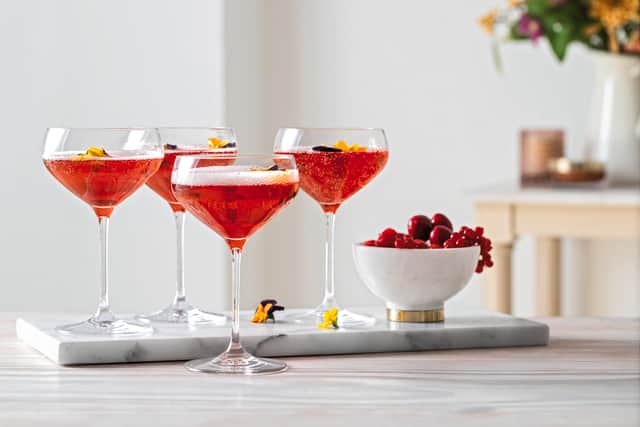

The origin of the Champagne coupe is a mystery. We know it dates back to at least the early 18th century, but the once held belief that it was modelled on the shape of Marie Antoinette’s breast is almost certainly false.
Whatever its history, it’s a style that constantly comes back in fashion and, with the current vogue for cocktails, it’s currently all the rage among those who like their cocktails filled with fizz.
Villeroy & Boch’s fine glass coupe has a generous, curvaceous bowl atop a tall, slender stem. The wide rim, tapered inwards from the bowl, allows you to not only appreciate the olfactory wonder of your Champagne, but sniff close enough and you can feel the bubbles burst on your skin.
Fill with posh Champers or a colourful cocktail of your choice (Kir Royale for us, please) and wallow in the decadence of the glass’s splendour.
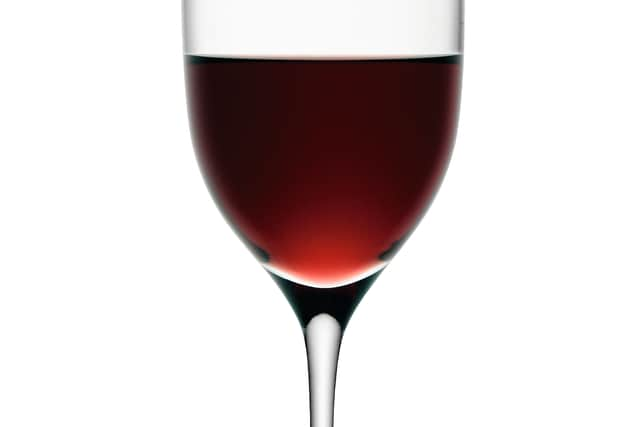

If you want good quality cut glass for your Port then head to a charity shop – they seem to be donated with the same frequency as James Last records and books by Danielle Steel.
For something more modern, seek out these smart glasses from London based design studio LSA International.
Port glasses are smaller than other wine glasses, not only because you want to pour smaller measures but because they also help avoid evaporation of that sweet, heady booze.
The straight edges on LSA International’s mouth-blown bowl make it look beautifully simple, sitting high above a wide, stable base on its hand drawn stem, focussing attention to the richly ruddy liquid within.
Pour yourself a glass of port, switch on some easy listening and open a book for a relaxing night in.
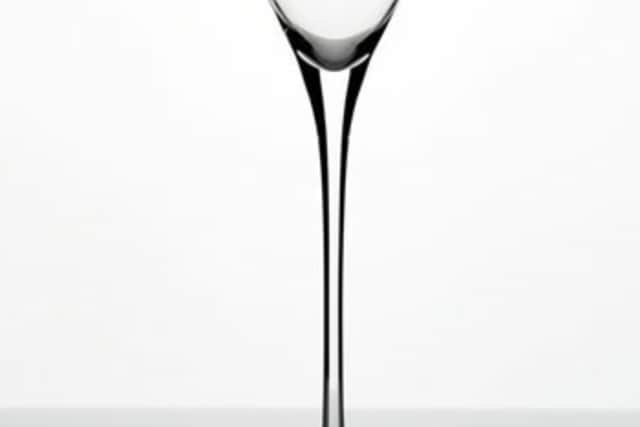

We wanted to include at least one glass from Zalto, the legendary Austrian glass blowing aces who many consider to be at the pinnacle of the trade, although to reach perfection it’ll cost you a higher price.
The bowl and stems of these glasses are blown as one piece, with the base subsequently attached, and although they at first seem too thin to handle, this technique – along with close attention to design – means that even if you tip one over you’ll be unlucky if it breaks.
Zalto’s dessert wine glass is a perfect example of the finesse they achieve in their glassware, being both delicately dainty and having strong curves and angles (tilted to match the angles of the Earth) to its modern design.
The stem is as thin as a wisp of smoke and is crowned by the crystal clear bowl, with those angles making the wine look like a liquid sculpture while accentuating the sweet aromas that lead you to take short, satisfying sips.
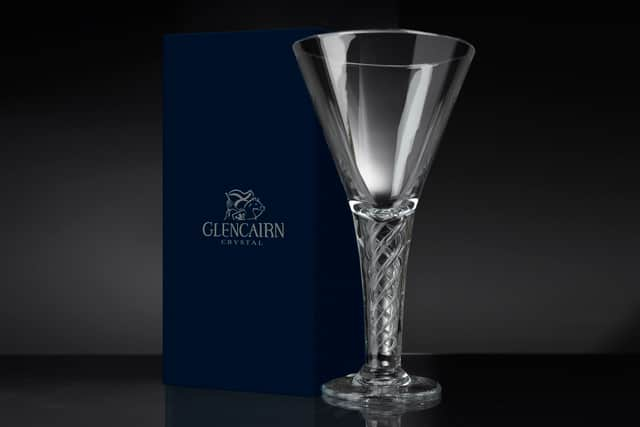

If you’re scrolling through the modern glasses in this list wondering where the traditional cut glass wine vessel is, then here it is, in 18th century stylings.
It has been designed to follow the type of glass Jacobites used in secret to toast the honour of the defeated Bonnie Prince Charlie who fled to France
It has a wee capacity of 260ml – enough for a small measure of wine (or a large measure of whisky) – with the V-shaped bowl rising from the circumference of the stem.
The nifty cut glass work is produced on the thick stem, leaving the bowl unadorned for optimum clarity for the glass’ contents. Original Jacobite glasses can fetch a small fortune, making this historical piece seem a bargain.
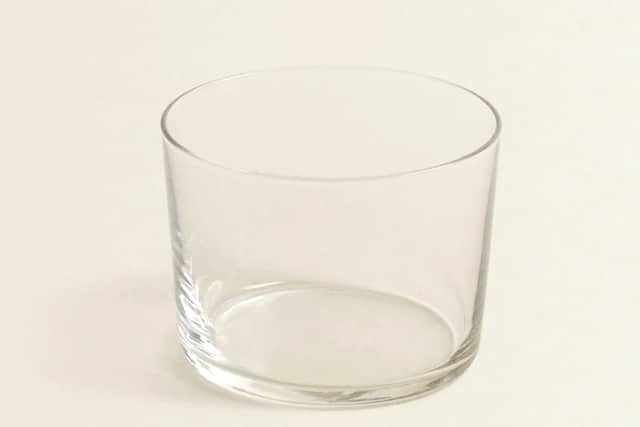

Wander into a Barcelona bar, order a wine and there’s a good chance it’ll be served in a short, stemless ‘Bodega’ glass.
These are the antidote to expensive, finely tuned wine glasses, with their squat nature making them more functional on livelier occasions (and for loading into a dishwasher).
You can still splash out a lot of money on some brands’ Bodegas, but if ever there was a glass to buy on a budget then it’s this one. These simple, squat glasses from Zara do the job just fine.
They have an even, medium glass thickness and stand at a mere 6cm high, holding 22cl wine. And at just £2.99 for a set of three they’re perfect to stock up on for your next tapas party.
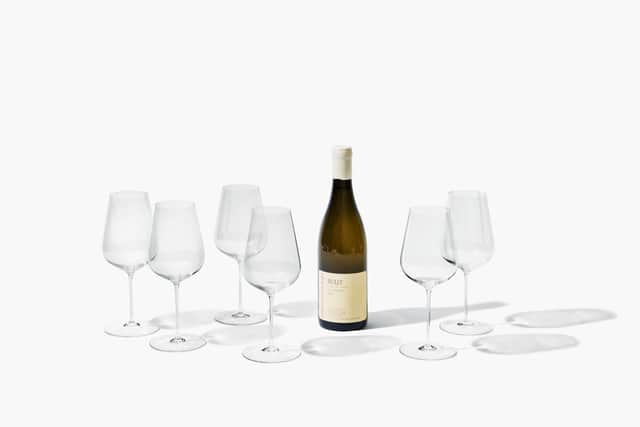

There has been much effort in recent years to create the ultimate glass that can be used to showcase the aromas, flavours and visual appeal of all wine styles.
Wine buffs and aroma boffins often direct their noses towards efforts by Zalto (expensive), Jancis Robinson X Richard Brendon (expensive) and Gabriel (even more expensive) as being the most successful.
The collaboration between wine expert Jancis Robinson and designer Richard Brendon gets our nod. Mouth-blown in Slovenia, it stands tall and proud on a wide base, yet is feather-light to hold.
A cuppable bowl tapers with strong, angled edges to a narrower, ultra-thin rim which, combined with its well balanced structure, makes for effortless sipping – whether that’s a rich and spicy red, a light, floral white or even something with a bit of sparkle.
For good looks and great taste, this glass has universal appeal.